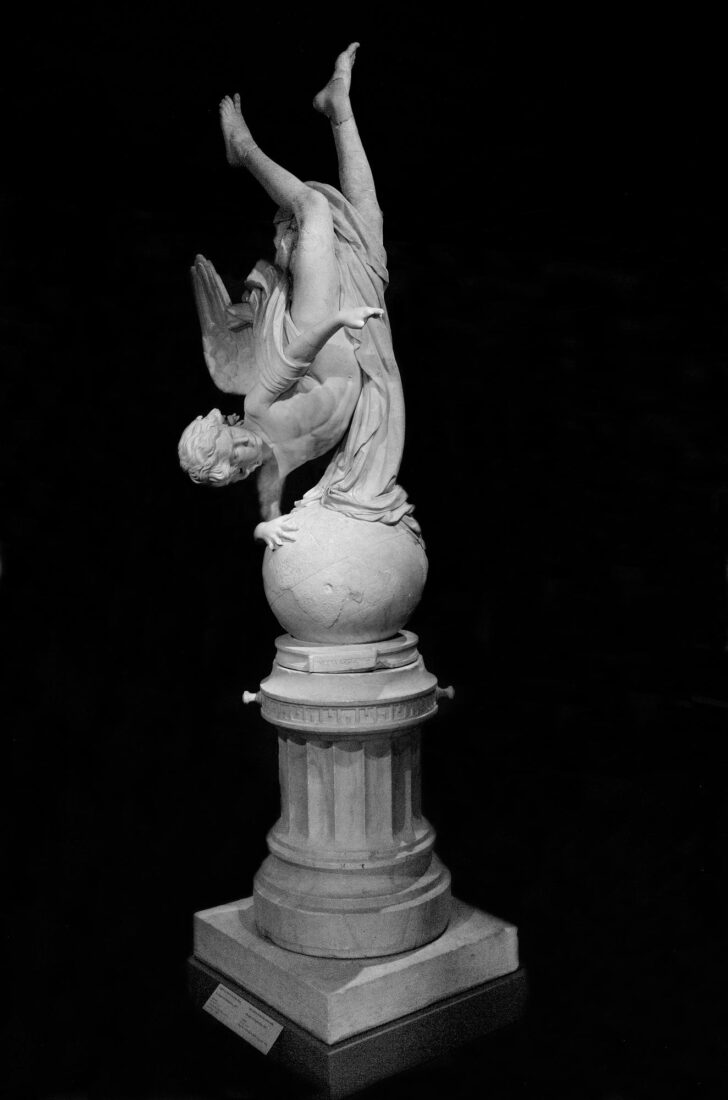We use cookies to make our site work properly, to personalize content and ads, to provide social media features and to analyze our traffic. We also share information about how you use our site with our social media, advertising and analytics partners. Read the Cookies Policy.

Vroutos Georgios (1843 - 1909)
The Spirit of Copernicus, 1877
Marble, 188 x 77 x 67 cm
Nikolaos Ioannis Iliopoulos Bequest
“The Spirit of Copernicus” is a unique example of an early and exceptionally daring composition for the Greek public. Vroutos made the plaster model in 1873, while he was in Rome, and in 1875 exhibited it at the Olympia exhibition, where he won the “silver medal second class”. In 1878 he presented it at the International Exhibition of Paris, while in 1881 at the exhibition held at the Vassilios Melas mansion for the benefit of the Red Cross.
The spirit of the leading astronomer, who reversed the dominant theory by claiming that the earth and the planets move around the sun, and not vice versa, is depicted in an equally subversive composition: an inverted winged young figure leans against the terrestrial globe with its right hand, while spinning it at the same time. He points towards the sun with his left hand. The inverted figure with its legs in the air was already known from the Hellenistic composition of the “Boy with the Dolphin” (Roman copy at the National Museum of Naples), from which Vroutos borrowed the stance of the boy, as well as the embracing of the head of the dolphin. A similar stance, originating from a Roman composition, was repeated in the work by Canova, “Hercules and Lichas” (1795-1815, Galleria Nazionale d’ Arte Moderna, Rome). The winged figure, moreover, which symbolizes the spirit of an eminent figure and supports itself on a globe, was already known from Descartes’ cenotaph at the church of Adolf Fredrik in Stockholm, by the Swedish sculptor Johan Tobias Sergel (1740-1814). In any case, for the Greek public, this composition was exceptionally daring and the endeavor was not carried on any further.

